Climate Strong Communities
Amid the challenges of a warming planet, we can find strength in nature—and in each other.
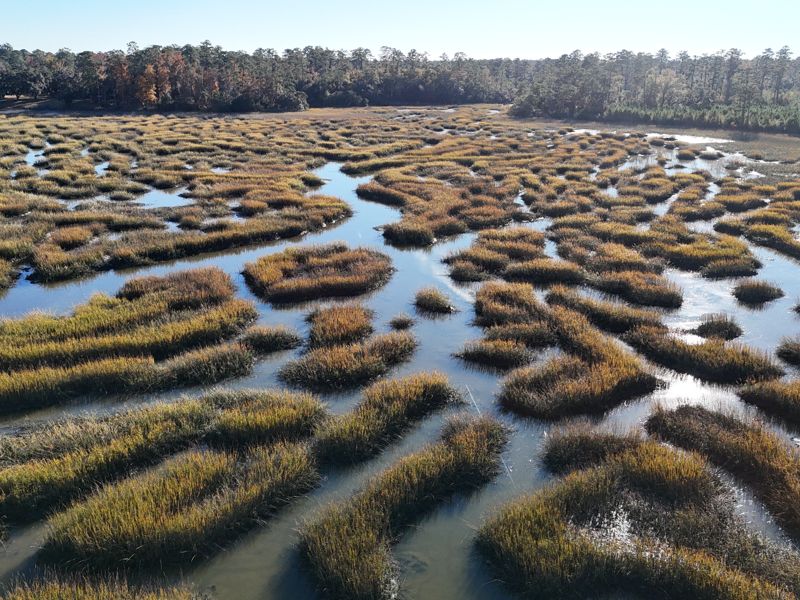
South Carolina’s Salt Marshes The Chelsea Plantation waterfrontage acts as a critical saltwater marsh migration corridor that will help the area adapt to future ecosystem changes. © Holstein Appraisals
Today, climate change throws life-threatening, non-stop challenges at us. But the situation isn’t hopeless, and we’re not helpless. In fact, when we grow our connections with the people and nature around us, we become more resilient than ever.
By protecting and restoring natural habitats, communities can adapt to and mitigate the impacts of coastal hazards, all the while supporting important plants and wildlife.
TNC in South Carolina is taking a multi-faceted approach to strengthening our communities in the face of rising seas and stronger storms. This includes both protecting remaining Lowcountry properties from development and harnessing the power of nature to strengthen shorelines.
As we’ve witnessed through community activism and volunteerism, South Carolinians are coming together to defend and protect land and water.
Together, through partnerships, grass roots mobilization and good old-fashioned teamwork, we are strengthening our communities.
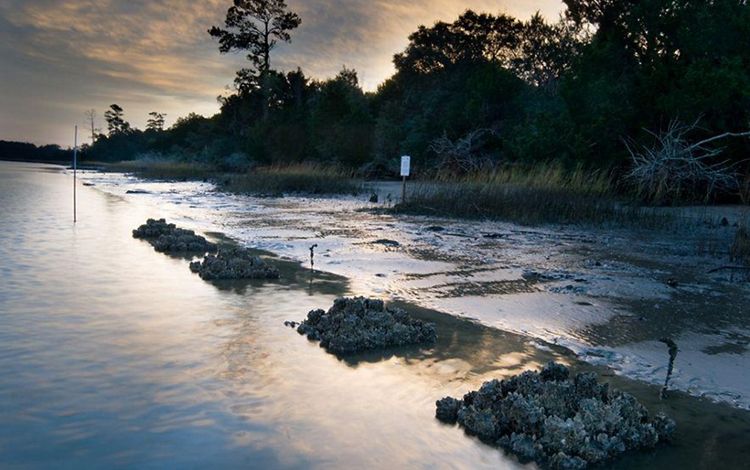
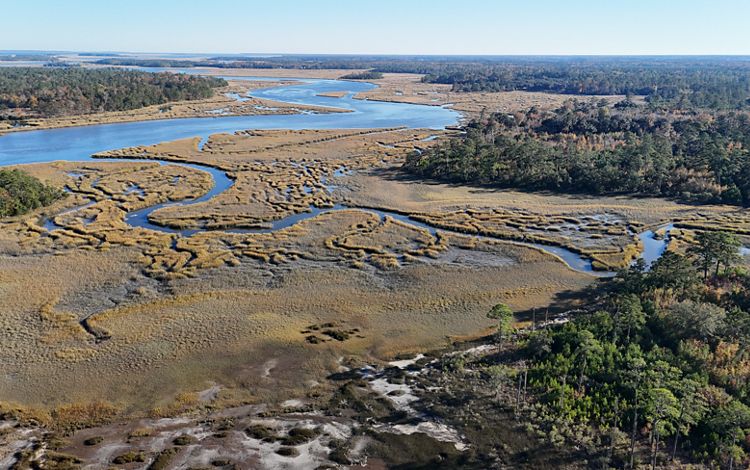
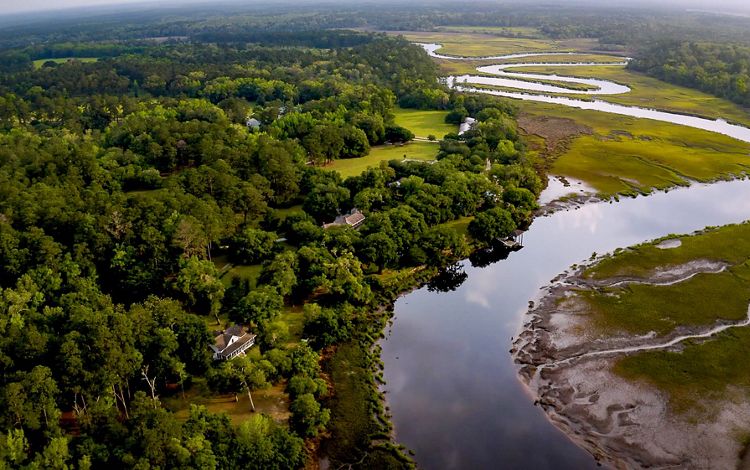
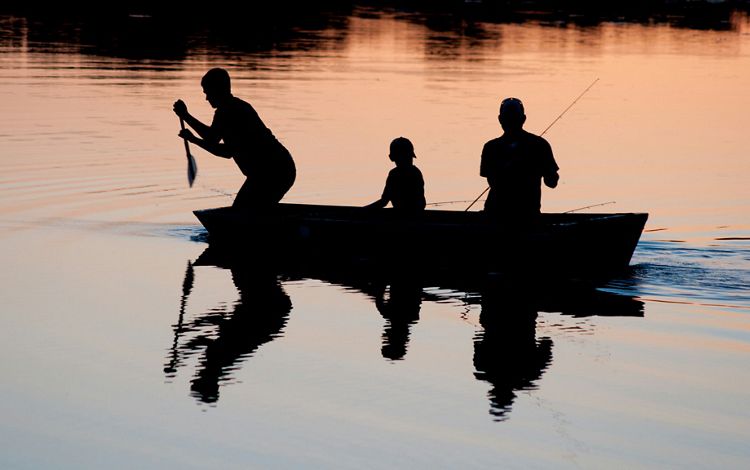
Chelsea’s fate was one of this region’s major tipping points for the future of its wildlife habitat, historical character and water quality... We weren’t willing to leave it to chance.
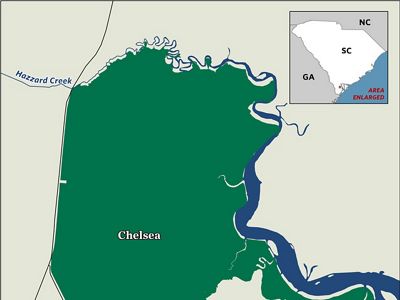
Jasper County, SC, is the third fastest growing county in the nation. With this growth comes rapid development. But as nearby residents experienced the loss of their stunning salt marshes and wild lands, they mobilized to save them.
Protecting the recent Chelsea Plantation property was a true community effort. With the threat of development looming, the community banded together, including residents of the small communities that dot the area and nearby Beaufort County. Groups like Keep Chelsea Rural went door-to-door with flyers against developing the property and even put up billboards saying folks wanted to preserve their rural community. Then, TNC’s incredible donors stepped up to help fund this acquisition.
This 2,700-acre property secures more than seven miles of frontage along Hazzard Creek, which drains into the Broad River and is part of Port Royal Sound watershed.
TNC in South Carolina has prioritized protection in the Port Royal Sound, including other recent acquisitions like the 7,300-acre Buckfield Plantation (now part of the new Coosawhatchie Wildlife Management Area) and the 4,409-acre Gregorie Neck property.

TNC in South Carolina is working with partners to expand an existing corridor between the Ashepoo-Combahee-Edisto River Basin (ACE Basin) and protected properties along the Savannah River on the Georgia border. The protection of the Chelsea, Gregorie Neck and Buckfield properties is part of a yearslong partner effort to protect remaining Lowcountry lands and equip communities for future ecosystem changes.
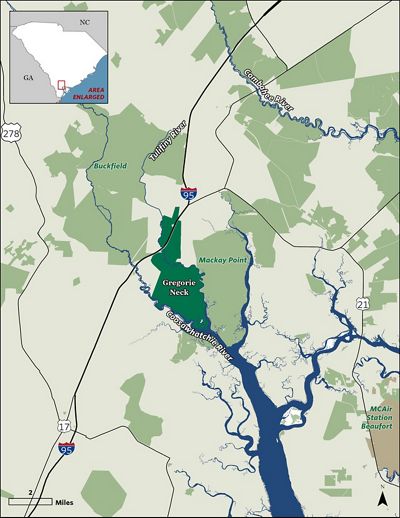
The 4,400-acre Gregorie Neck property is flanked by deep water access on the Coosawhatchie and Tulifiny Rivers and bisected by Interstate 95, making it a highly sought out site for development. But, to preserve the region’s nature and wildlife, TNC purchased the property and will be permanently protecting it with a conservation easement through the Open Space Trust. The property was divided into several parcels and available for sale to conservation buyers--and forever protected with perpetual conservation easements.
Gregorie Neck is home to massive pines and hardwoods that have not been harvested in many decades. Impoundments along the rivers’ edges provide critical habitat for wading birds and migratory waterfowl. Open agricultural fields support livestock and songbirds.
Buckfield protects more than 7,300 acres in coastal South Carolina’s Hampton and Jasper counties. The property links ecologically significant landscapes to create a 12,000-acre stretch of protected land in this fast-growing region. TNC acquired 3,654 acres, marking a bold first step in the permanent protection of Buckfield, while Open Space Institute acquired the remaining 3,672 acres to join its previously secured 5,000-acre Slater property. These lands were purchased by the South Carolina Department of Natural Resources (SCDNR) and became the Coosawhatchie Heritage Preserve and Wildlife Management Area.
In 2025, The Nature Conservancy found a creative solution to save what is referred to as a "donut hole" -- a private inholding surrounded by conserved land. The 625 acres had been used as private hunting land, but the landowner was willing to trade it for land with similar opportunities. TNC's creative solution: trade him the last remaining piece of the conserved Gregorie Neck property. This property was close by, had ample hunting opportunities and was already under a conservation easement. This deal represents a win-win for both TNC and the landowner, and is just another example of creative conservation solutions.
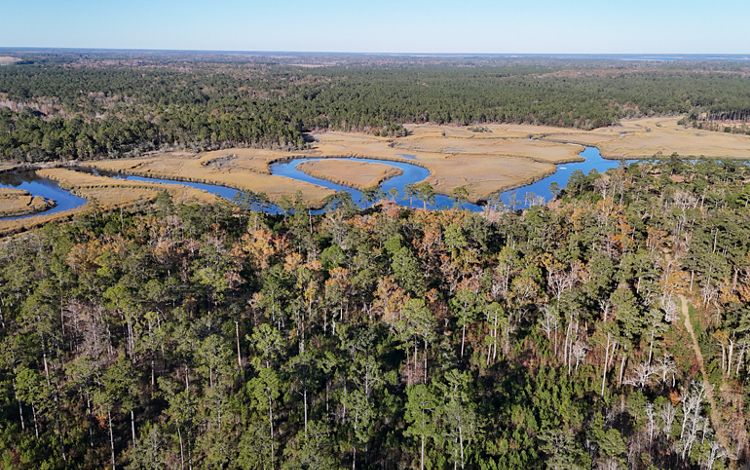
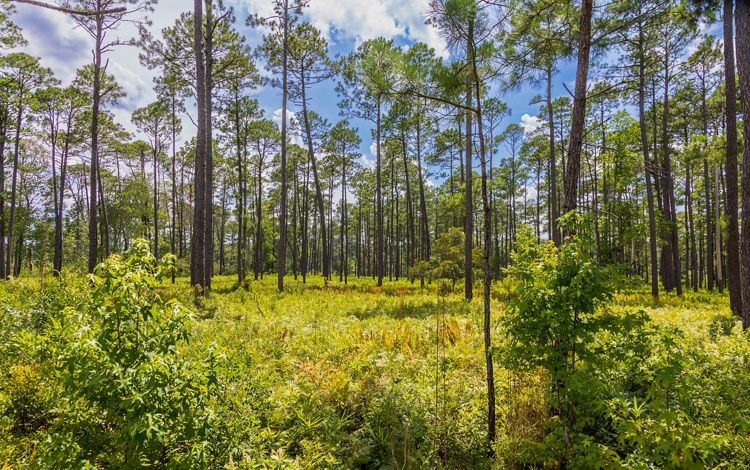
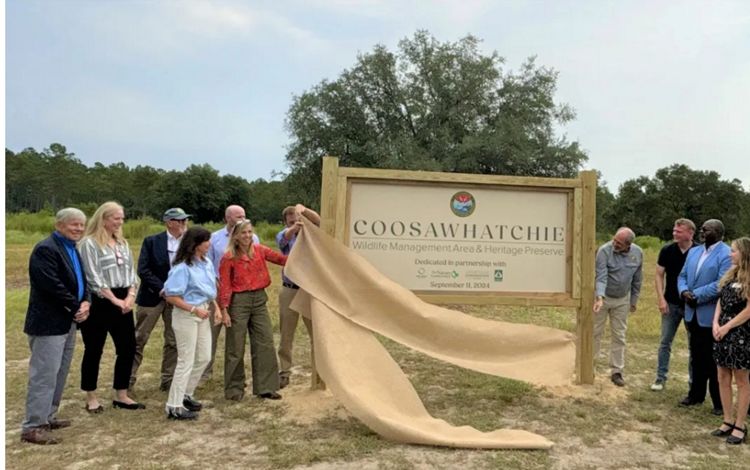
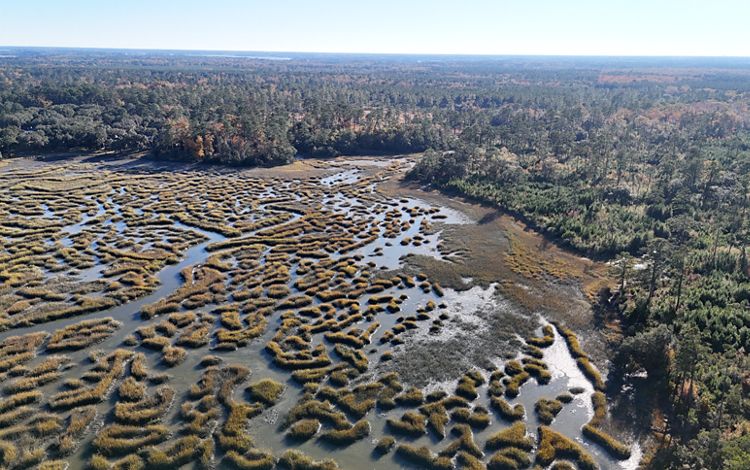
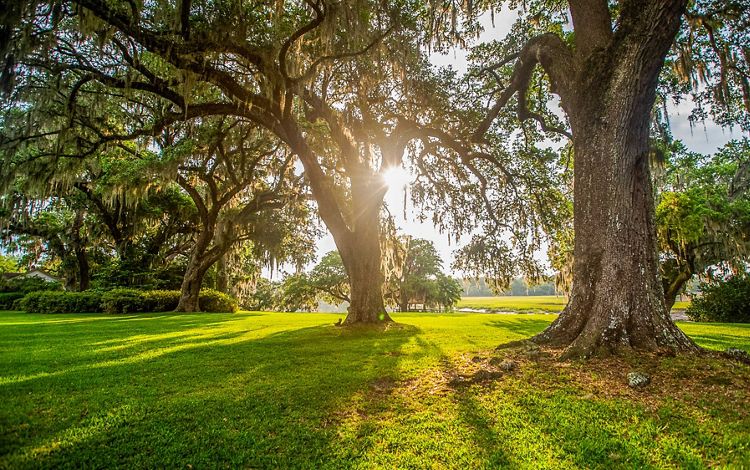
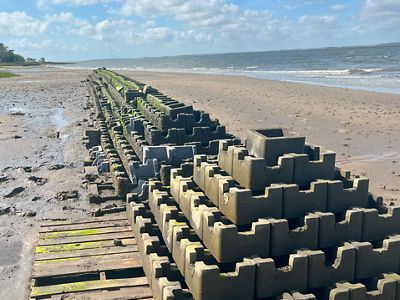
The same natural features that give us great fishing and recreation can also stabilize our shores.
Oyster reefs not only play a part in keeping water at bay, but also keep sand in. In addition to reducing or reversing erosion by trapping sediment, oyster reefs have many benefits:
TNC South Carolina is restoring oyster reefs as a barrier against rising sea levels and stronger storms. Known as living shorelines, green infrastructure projects like restoring oyster reefs give coastal communities a chance to heal themselves—naturally.
Volunteers, conservation organizations and government entities have worked for 20 years building living shorelines one bag and one block at a time. Those efforts are making a real difference, but we need to significantly scale up our work to keep pace with more intense storms and rising sea levels.
Subscribe to Nature News.
The Marine Corps Air Station Beaufort recognizes the close interconnectivity of their resilience and adaptive capacity within this tri-command area. TNC has partnered with the base to boost resilience, as well as to promote activities outside their direct vicinity to reduce vulnerabilities to climate change, protect critical infrastructure and help
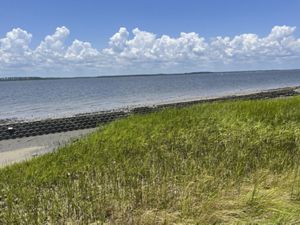
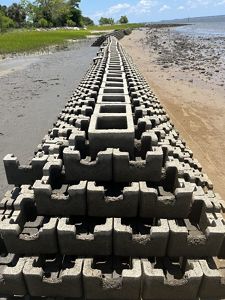
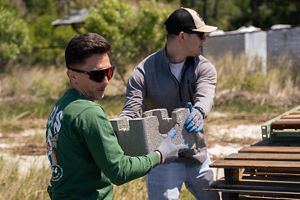
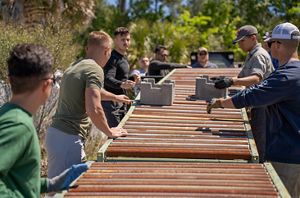
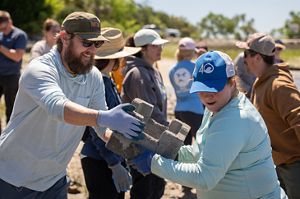

Completed oyster restoration: A completed living shoreline, comprised of Oyster Castle pieces, along coast of Laurel Bay at Marine Corps Air Station, Beaufort SC. © Nichole Pehl/TNC

Oyster castles, Beaufort SC: Oyster Castles® are interlocking, concrete blocks that are installed along a shoreline with bags of clam and oyster shells. © Nichole Pehl/TNC

Living shoreline build, SC: 2025 Volunteers help restore an oyster reef at Marine Corp Airforce Base, Beaufort County, SC © Kyle Baskin

Kyle Baskin: Volunteers help restore an oyster reef at Marine Corp Airforce Base, Beaufort County, SC. © Kyle Baskin

Living shoreline build, SC: 2025 Volunteers help restore an oyster reef at Marine Corp Airforce Base, Beaufort County, SC © Kyle Baskin
In July 2023, The Nature Conservancy in South Carolina was awarded $6.8 million from NOAA’s Transformational Habitat Restoration and Coastal Resilience Grant. The funds will support a four-year project to implement a program titled Transforming the Scale and Equity of Living Shorelines in South Carolina.
The program consists of three tasks:
South Carolina Resilience and Adaptation
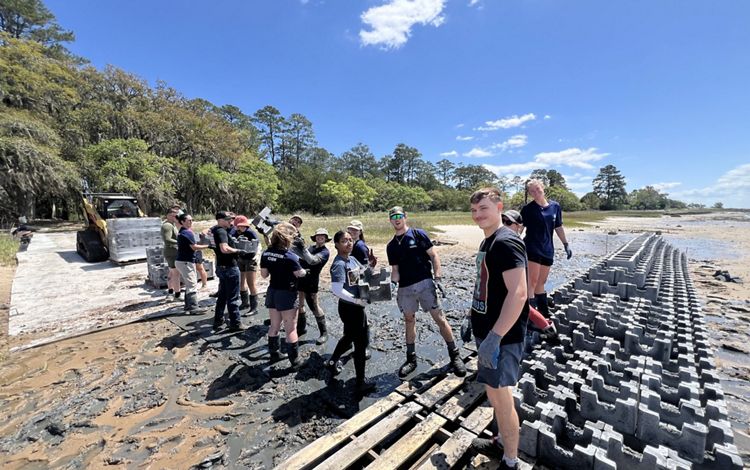
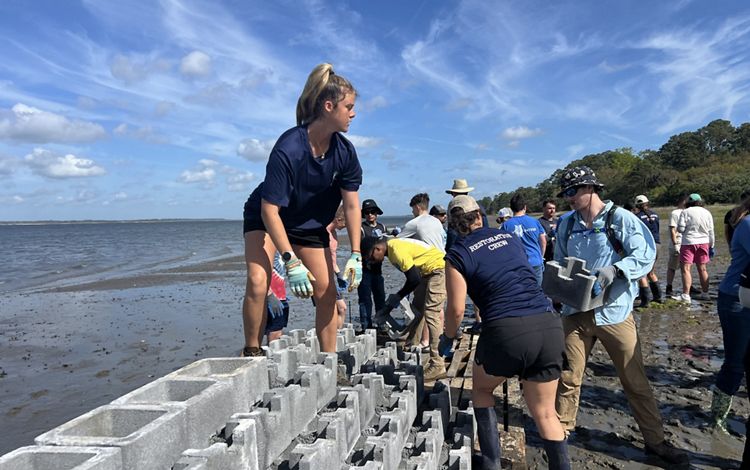
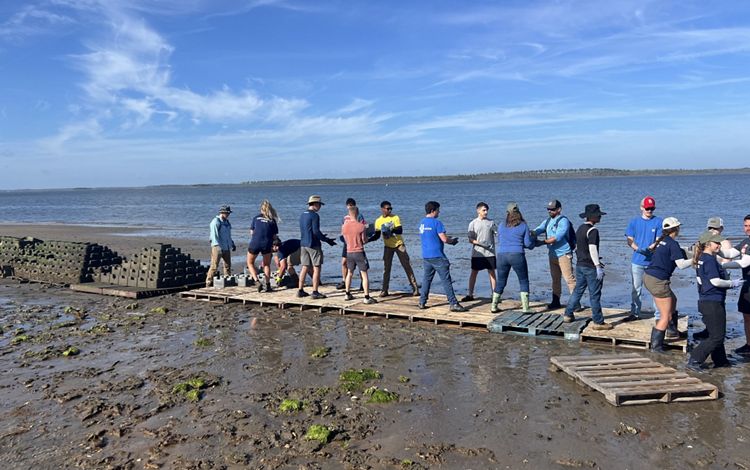
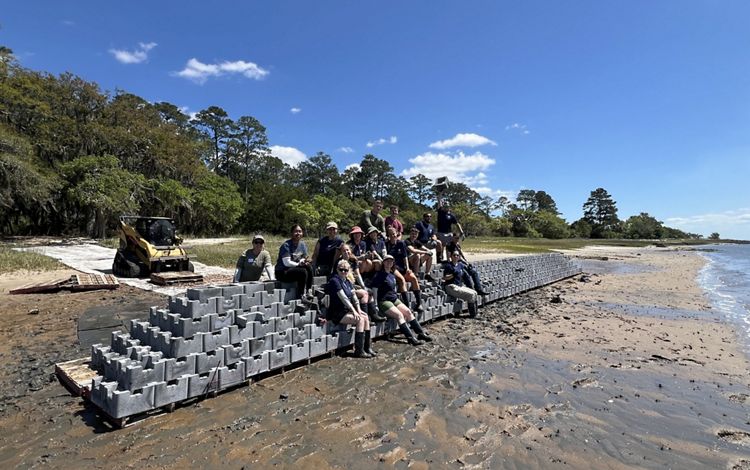
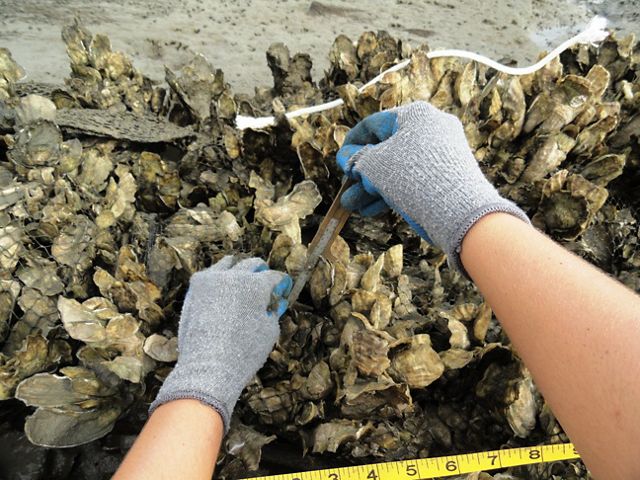
The Nature-Based Exchange aims to foster the widespread and practical application of natural and nature-based solutions (NNBS) throughout South Carolina to address climate change, biodiversity loss, water management and social inequalities. A collaborative effort led by The Nature Conservancy, the initiative focuses on promoting equity, community engagement and environmental resilience to increase NNBS awareness, access and development.
TNC in South Carolina relies on partnership to strengthen our communities. In land acquisition, we work closely with partners like the Open Space Institute, Open Land Trust and Sustain South Carolina, as well as the South Carolina Conservation Trust and SC Dept. of Natural Resources.
These partnerships extend to TNC in South Carolina’s living shoreline and education work too. As a partner in the Nature-Based Exchange, TNC’s Liz Fly hosts the Conversing with Nature podcast. We invite partners to chat with us about their projects and opportunities to collaborate, including related episodes:
These connections make land protection possible. Together, we go much farther, faster than we could alone. As we work to strengthen South Carolina in the face of climate change—including saving lands from development and stabilizing eroding coasts—we must work as a community, for our communities.